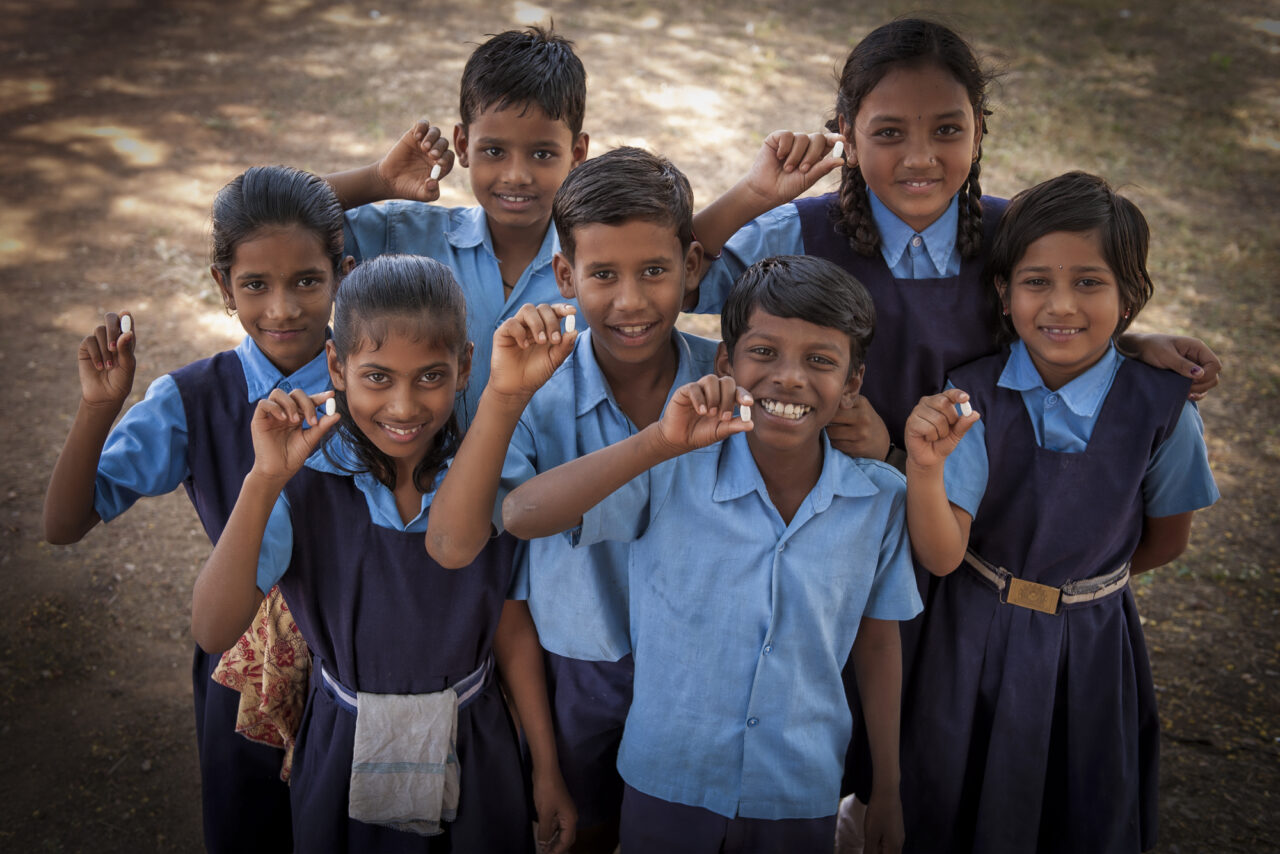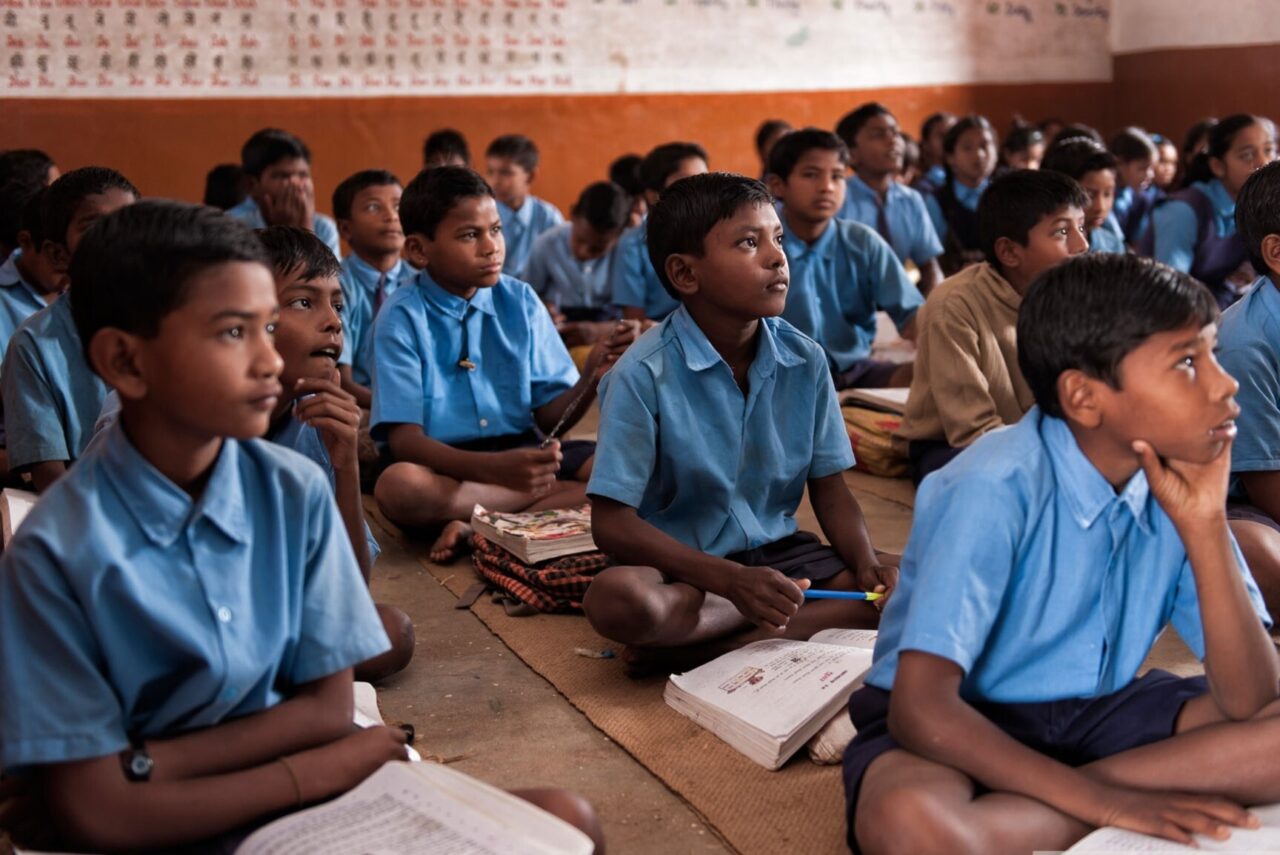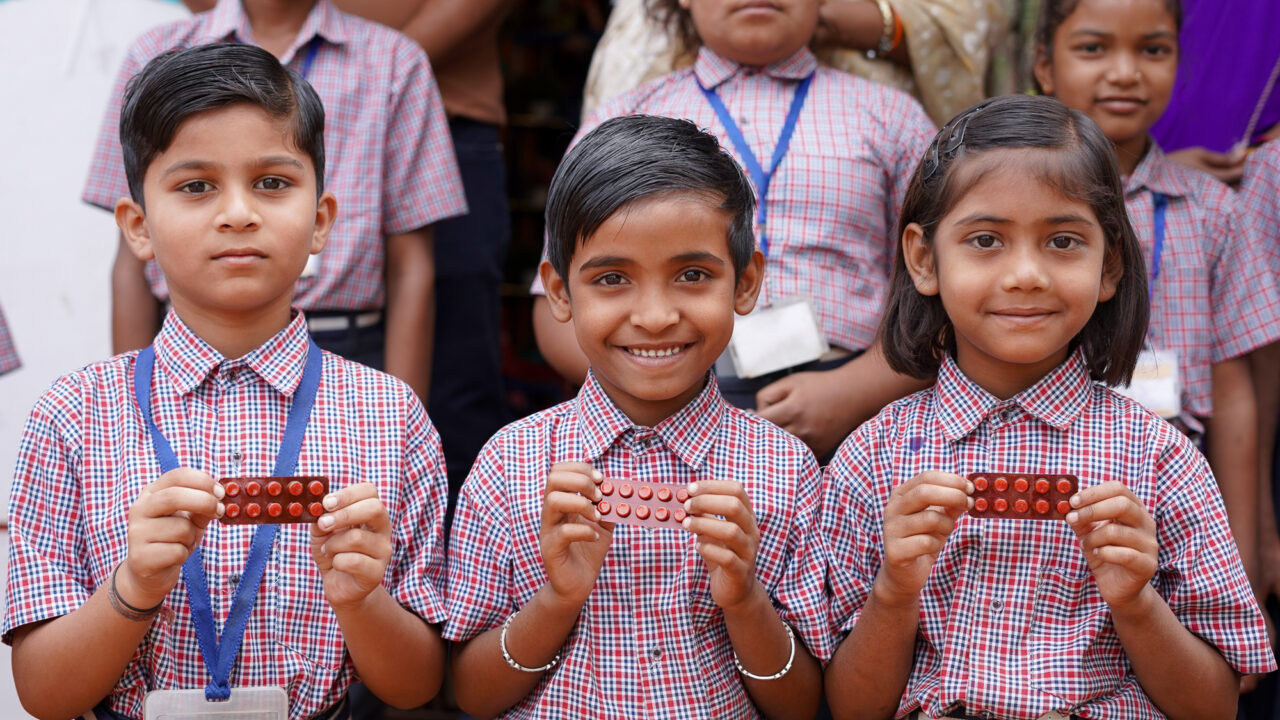
Huge reach, high impact: Leveraging schools to deliver lifechanging health solutions to millions of children
Our expertise in helping governments scale school-based health interventions allows us to quickly and cost-effectively reach children with treatments they urgently need
Millions of children are suffering from conditions that are entirely preventable and treatable, like parasitic worm infections and micronutrient deficiencies. The challenge isn’t finding treatments that work, it’s getting effective treatments to the children who need them.
Working closely with governments through our health and nutrition technical consulting services, we reach hundreds of millions of children by delivering solutions where they already are: at school.
By leveraging school infrastructure we overcome many of the challenges – such as uptake and adherence – that too often prevent highly effective programs from reaching scale.
Scaling health interventions through schools is one of the most cost-effective ways to reach children — since 2014 Deworm the World has helped governments deliver over 2 billion treatments to children, all for less than $0.50 each. As a result, tens of millions of children are less likely to be infected with intestinal worms – improving their health, school attendance, and long-term wellbeing. We estimate that the first decade of the program will produce $23 billion in lifetime productivity gains – changing the trajectory of a generation of children.

Your investment in school health will help us reach millions of more children
With a gift to the High Impact School Health Fund, you can help us expand our school health programming – bringing our existing interventions into new countries, and launching new ones that will change millions of young lives.
We’re ready to continue to build on our success. In India, we helped the government launch National Deworming Day and scale it into the largest single-day public health program in the world. We then launched Equal Vitamin Access to tackle anemia through schools, helping India increase the number of children reached with treatments by three-fold in a few years.
We’re just getting started – millions of more children need these treatments, and there are many other underfunded health solutions that we can help deliver at schools, like HPV vaccination for school-age girls, which is currently being explored in our Accelerator.

How it works: Delivering school-based health interventions
We leverage school infrastructure to scale interventions quickly and cost-effectively, with no charge to families. Given how far-reaching school systems usually are – for example, in Malawi, there are six times more primary schools than health facilities – many more children can benefit from these critical preventative health interventions.
Teachers administer treatments to children.
Teachers – who are trusted by students and their families – are trained on how to safely administer treatment. In areas where many children are not enrolled or are in informal schools, community health workers are trained instead. Teachers are some of our greatest program advocates, as they’re able to see the impact on children’s attendance and attention in class.
We partner closely with governments to ensure the successful implementation of school health interventions.
Through our technical assistance model, we work hand-in-hand with our government partners on how to best design, implement, and measure each school health intervention. We make sure the government is set up for success – from having medicines available when and where they’re needed, to informing families and communities about program benefits, to using data to improve treatment coverage.
There’s a close relationship between education and health: Our school-based health interventions keep children in school and improve academic performance.
Our interventions are proven to improve education outcomes — research shows that deworming reduces school absenteeism by 25%, and that iron supplementation boosts IQ scores by 4.6 points on average. Investing in school health and nutrition is a highly cost-effective way to significantly improve children’s learning and tackle the global education crisis.
School health and nutrition
Our school-based programs help children overcome conditions that have devastating effects on physical and cognitive development, like anemia and parasitic worms.


Equal Vitamin Access
Launched


